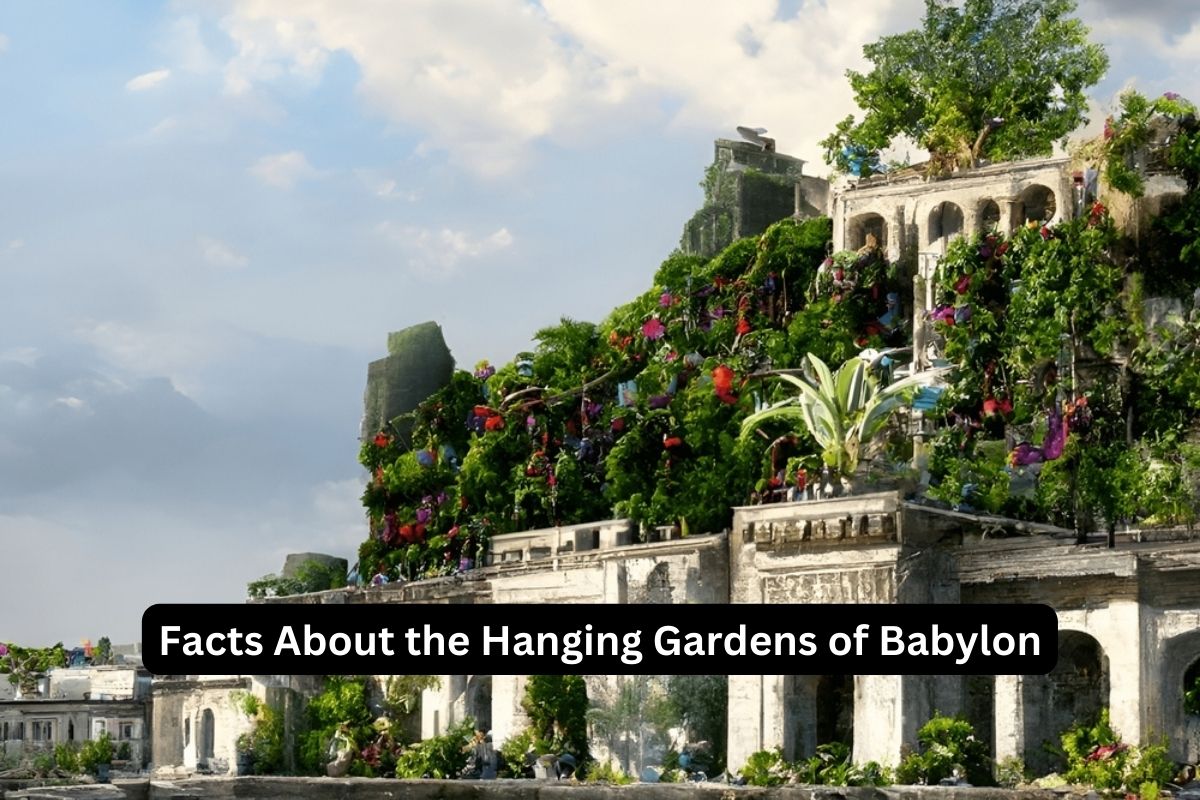The Hanging Gardens of Babylon, one of the Seven Wonders of the Ancient World, have captivated the imaginations of people throughout history.
Believed to have been commissioned by King Nebuchadnezzar II for his wife, Queen Amytis, these gardens were a magnificent architectural marvel.
While their exact location and existence remain a topic of debate among historians, the gardens were described as a series of elevated terraces adorned with diverse plant life.
They required an intricate irrigation system and left a lasting impact on art, literature, and cultural imagination.
Despite the mystery surrounding them, the Hanging Gardens of Babylon continue to inspire awe and fascination as a symbol of ancient grandeur.
Hanging Gardens of Babylon Facts
1. Considered one of the Seven Wonders of the Ancient World
The Hanging Gardens of Babylon were renowned as one of the Seven Wonders of the Ancient World, a list compiled by ancient scholars to highlight the most remarkable architectural and artistic achievements of their time.
Also Read: Facts About the Colossus of Rhodes
The inclusion of the gardens on this prestigious list is a testament to their magnificence and significance in ancient history.
2. Believed to have been built in Babylon, present-day Iraq
Babylon, located in modern-day Iraq, was a major city in ancient Mesopotamia. It was the capital of the Babylonian Empire and a center of culture, trade, and architectural innovation.
The Hanging Gardens were said to have been constructed within the boundaries of Babylon, adding to the city’s grandeur and allure.
3. Commissioned by King Nebuchadnezzar II for his wife, Queen Amytis
According to historical accounts, the gardens were built by King Nebuchadnezzar II, who ruled Babylon during the 6th century BCE.
The king is said to have commissioned the gardens to please his wife, Queen Amytis, who longed for the lush green landscapes of her homeland.
Also Read: The Lighthouse of Alexandria Facts
The gardens were intended as a magnificent gift to alleviate her homesickness and provide her with a captivating and beautiful retreat within the city.
4. Designed as a series of terraces or raised platforms
The Hanging Gardens were ingeniously designed with a series of ascending terraces or raised platforms.
The terraces were constructed to mimic the appearance of a mountain or hillside, with each level gradually rising above the previous one.
This architectural feat allowed for the cultivation of plants on multiple levels, creating a stunning visual effect and maximizing the use of space.
5. Required an elaborate irrigation system for watering the plants
The Hanging Gardens relied on a sophisticated irrigation system to supply water to the plants. The challenge was to transport water from the nearby Euphrates River to the elevated gardens.
It is believed that a system of pumps, aqueducts, and waterwheels was employed to lift the water and distribute it throughout the terraces.
This innovative irrigation system played a crucial role in sustaining the lush vegetation and ensuring the survival of the diverse plant life.
6. Not actually hanging, but elevated gardens
Despite the name “Hanging Gardens,” the gardens were not suspended in the air or hanging from ropes as the term may suggest.
Instead, they were elevated gardens built on a series of terraces. The name “hanging” likely refers to the gardens’ elevated nature, giving the impression that they were hanging in the air when viewed from a distance.
The terraces, supported by stone columns, provided a solid foundation for the gardens while creating a visually striking landscape that appeared to be suspended in mid-air.
7. Known for their diverse plant life, including exotic species
The Hanging Gardens of Babylon were renowned for their remarkable variety of plant species. Historical accounts describe the gardens as a lush oasis filled with exotic trees, vibrant flowers, fragrant shrubs, and cascading vines.
The gardens showcased a wide range of plant life, carefully curated to create a captivating and colorful environment. It is said that the foliage covered the terraces, providing shade and a refreshing atmosphere.
8. Described by ancient writers, but no archaeological evidence
The Hanging Gardens have been described in ancient writings by renowned historians and travelers such as Herodotus, Strabo, and Diodorus Siculus.
These accounts offer vivid descriptions of the gardens’ magnificence and beauty. However, despite extensive research and excavations in the region, no physical evidence has been conclusively linked to the actual existence of the Hanging Gardens.
The absence of archaeological findings has led some scholars to question whether the gardens were a real creation or a legend born out of literary imagination.
9. Existence is debated among historians
The existence of the Hanging Gardens of Babylon has been a subject of debate among historians and archaeologists for centuries. While some scholars argue that the gardens were a real marvel of ancient architecture, others propose alternative theories.
Some suggest that the gardens might have been a misinterpretation or exaggerated account of other gardens in ancient Babylon, while others believe they could be a combination of different gardens merged into one legendary structure.
10. Continue to inspire art and serve as a symbol of ancient grandeur
Despite the uncertainty surrounding their existence, the Hanging Gardens of Babylon have left an indelible mark on human imagination. The grandeur, elegance, and sheer beauty associated with these gardens continue to captivate artists, writers, and architects to this day.
Their legendary status as one of the Seven Wonders of the Ancient World ensures their enduring presence in popular culture, serving as a symbol of the incredible architectural achievements of ancient civilizations and inspiring awe and wonder in people across the globe.
The Hanging Gardens stand as a testament to the human desire to create and cultivate natural beauty in even the most challenging of environments.
